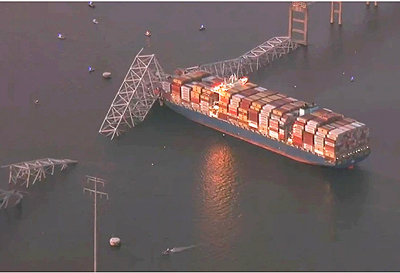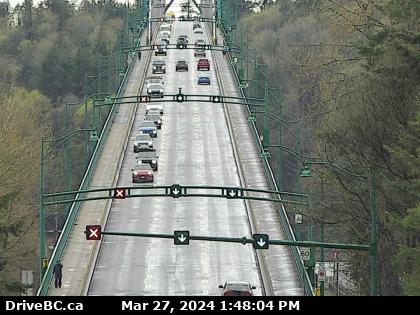Wednesday March 27, 2024 | VICTORIA, BC [Updated 10:10 pm]
by Mary P Brooke | Island Social Trends
The Baltimore bridge collapse has caught the attention of the world.
So many aspects of the tragic incident have been brought to light, including injury and loss of life, the role of emergency responders, and the role of infrastructure management by municipalities and other levels of government in addition to the on-water marine aspects of the incident.
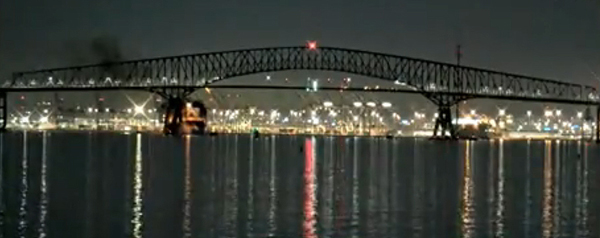
The incident that around 1:30 am (Eastern Time) on March 26, 2024 saw a 300-metre (984-foot) cargo ship crash (called Dali) into the large Francis Scott Key Bridge in Baltimore, Maryland.
Six bridge maintenance workers lost their lives by falling from quite a height into the cold water below the bridge; they were workers from Mexico, Honduras, Guatemala and El Salvador. Two workers that fell from the bridge into the water were rescued: one had no injuries but the other was taken to hospital with serious injuries.
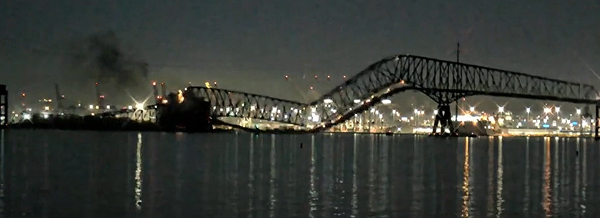
According to NBC News, all 22 crew members on board the ship, including two pilots, have been accounted for and no injures were reported, Synergy Marine Group, the managing company of the ship told NBC News. The Dali container ship was bound for Sri Lanka.
The ship is owned by Grace Ocean Private Limited and managed by Synergy Marine Group. Danish shipping giant Maersk stated it had chartered the vessel.
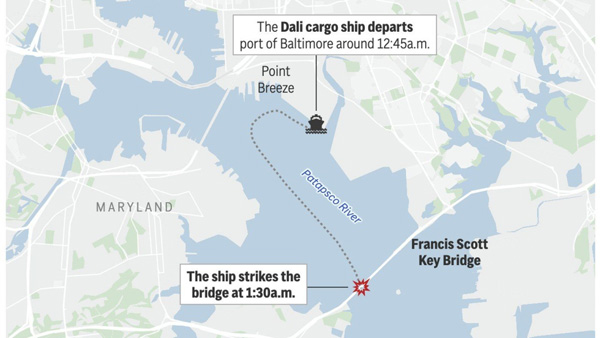
Economic impacts:
The port at Baltimore has a significant economic impact. Over 80 percent of all vehicles imported to the USA come through the Baltimore port.
The surrounding local economy and nation-wide economy will be affected at various levels for variable periods of time.
The bridge has been serving the region and the country since 1977.
Media coverage:
Canadian and US mainstream media covered details of the event throughout the day Tuesday, and analysis by engineers continues through the news cycle today.
A detailed insightful interview on the CBC’s The National was done live last night by news anchor Heather Hiscox — technical details delivered with sensitivities about what was being seen in the video.
Federal government to cover costs:
Quite readily US President Joe Biden was on TV saying the federal government would cover the costs of restoring the bridge and associated emergency-response costs, with a footnote that it will require approval from Congress.
Ship lost control:
Reportedly the ship’s pilots knew they had lost control of the vessel and called the local coast guard with a may day (emergency) message. One engineer interviewed on CBC said that likely the ship lights coming back on (after the ship completely blacked out) was the emergency generator kicking in, and that the pilots likely pushed the engines as hard as possible in reverse (hence the billowing black smoke).
But the momentum of such a heavy vessel was an overwhelming impact for the bridge post that it ran into it, and down went the bridge.
Fortunately for vehicles that were approaching the bridge, the may day call that was rerouted to on-the-ground emergency management meant that traffic could be prevented from embarking on the bridge; they had 90 seconds notice. The mayor of Baltimore said “that saved lives” and that that emergency responders were “heroes”.
The National Transportation Safety Board said this evening that the vessel was also carrying 56 containers of hazardous materials including corrosives, flammables and lithium ion batteries. There is a sheen on the water, it was stated in a media session held just before 9 pm Eastern Time,
BC Government statement:
In light of the significant infrastructure aspect of yesterday’s incident (and recent new legislation in BC to deal with commercial trucks crashing into bridges), the BC Ministry of Transportation and Infrastructure (MOTI) has released the following statement to Island Social Trends today.
MOTI begins by saying their hearts go out to all the people impacted by the Baltimore bridge collapse. They add that public safety is the ministry’s top priority.
The statement continues:
- B.C. has one of the most comprehensive bridge inspection and safety programs in the country.
- Each of the ministry’s approximately 3,000 structures are inspected annually and the ministry supplements these with more extensive detailed inspections, as needed.
- When issues are identified, we take appropriate and immediate action.
- This coming fiscal year (2024/25), the ministry will invest over $139 million to continually inspect, repair, rehabilitate and seismically upgrade its bridges.
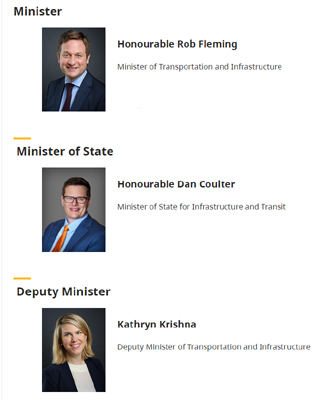
Enhancement underway in BC:
In BC, two main bridges over waterways that carry large vessels are the Lions Gate Bridge and Ironworkers Memorial Bridge (both span the Burrard Inlet).
MOTI today provides this update on those bridges:
- The ministry is also progressing with plans to retrofit the Lions Gate Bridge and Ironworkers Memorial bridges, to strengthen their resilience in the extremely unlikely event of vessel impact. Detailed design work on this is currently underway.
- We are enhancing the existing concrete collar at the base of the south tower of the Lions Gate Bridge with an in-water rock-fill berm. The north tower already has one.
- We will also be installing in-water deflection structures at the Ironworkers Memorial Bridge.
- Both the Lions Gate and Ironworkers Memorial bridges have operated safely since opening in 1938 and 1960, respectively. Since then, safety upgrades have been completed, including extensive seismic upgrades.
- These measures will complement the stringent vessel transit procedures put in place by the Vancouver Fraser Port Authority for the safe movement of people and goods in the Burrard Inlet.
Strong relationship with port authorities:
MOTI comments on the ports:
- The ministry has a strong relationship with the Vancouver Fraser Port Authority, which sets the requirements for vessel movement and safety within the port.
- Because the Port of Vancouver is a compulsory pilotage area, any commercial ship over 350 gross tonnes (and pleasure craft over 500 gross tonnes) must have a certified B.C. Coast pilot or Fraser River ship’s pilot on board before navigating through port waters.
- These pilots are professional and highly experienced mariners with detailed local knowledge about traffic, weather, tides, currents, and berth arrangements to ensure large ships make it to their destinations safely. When a pilot boards the ship, they take over all communication between the ship and the shore, other ships, tugboats, facilities, marine traffic, and the Coast Guard.
===== RELATED:
NEWS SECTIONS: TRANSPORTATION




